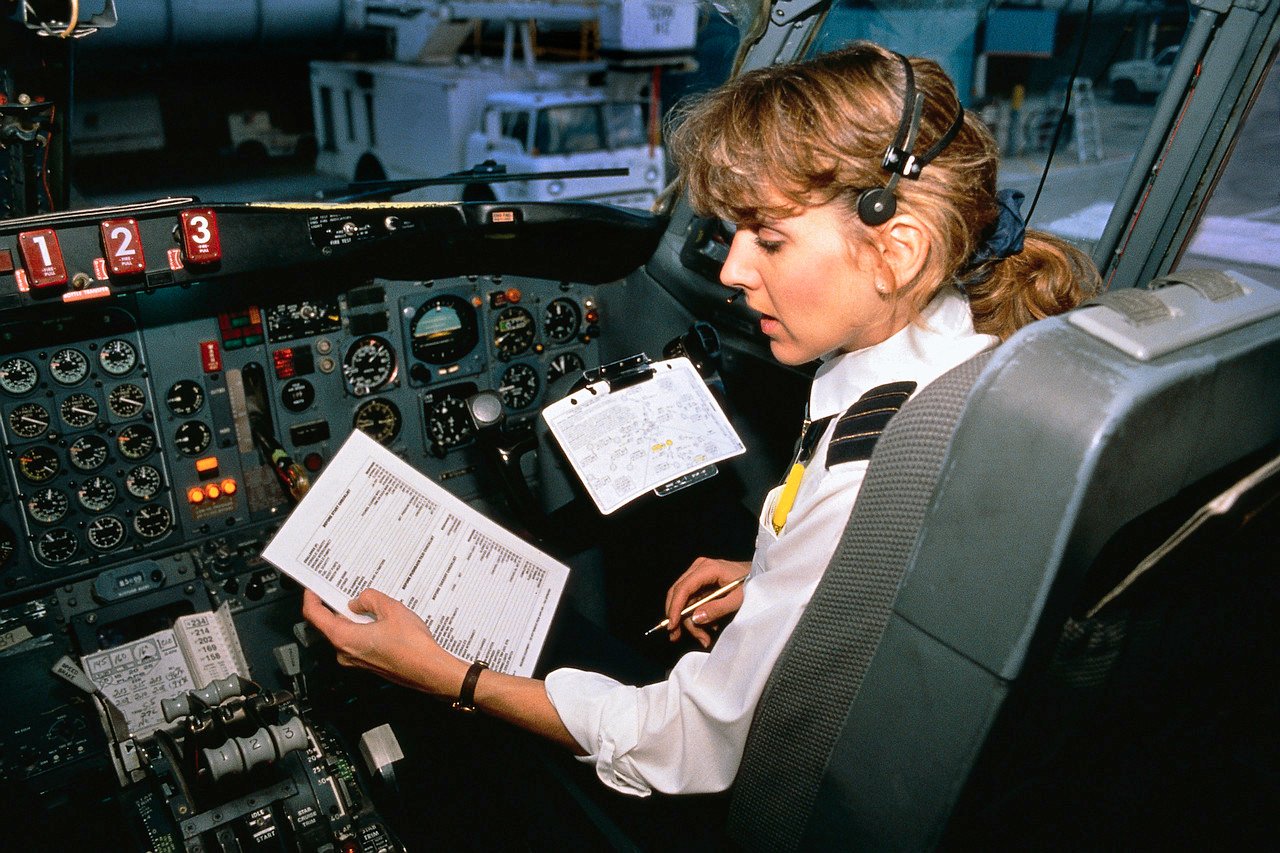Understanding What Aviation Safety Culture Is

“Safety culture” is a phrase that gets thrown around a lot in aviation safety management systems (SMS) as a vague reference to different aspects of safety.
Understanding the meaning of aviation safety culture is less practiced in philosophy as it is recognition of what it looks like in actual practice for:
- Safety management’s responsibility;
- Employees’ responsibilities;
- Management-employee relationships;
- Employee actions when nobody is watching; and
- The structure of an aviation SMS.
Understanding what healthy and unhealthy safety culture looks like, and then incorporating healthy aspects into your own SMS is certainly easier said than done.
If you don’t have a firm grasp on what safety culture means for your organization, chances are that
- your safety culture is not very well-developed; or
- you are starting a new safety job; or
- you are working on a new SMS implementation.
Related SMS Implementation Articles
- SMS First Steps - How to Create an SMS Implementation Plan
- 4 Best Aviation SMS Gap Analysis Strategies for SMS Implementations
- Your Top 4 Risks to Aviation Safety Management System Implementations
To create a strong culture of safety, aviation safety management must encourage the following attributes in their safety program.
1 – Build Safety Responsibility from the Bottom Up

Building from the bottom up is a serious aviation safety management commitment to recognizing that hazard identification and subsequent mitigation activities start with front-line employees. By "recognizing," we mean building communication structures that build confidence through:
- Knowledge;
- Hazard identification ability; and
- Safety responsibility.
The last bullet point, safety responsibility, is an aspect of safety culture that often goes unaddressed, or unnoticed. One of the primary problems we have seen in most aviation SMS is that organizations who kill a sense of safety responsibility in front-line employees struggle with:
- corporate culture,
- management tyranny, or
- excessive top-down structure.
It creates a mindset in workers that:
- management will deal with it, or
- I’m not qualified to make an X decision, or
- I’ll defer to the “expert” instead of taking action.
In short, employees are left with apathy. Most people like at least some sense of responsibility because responsibility and the sense that “this matters” often go hand in hand. Healthy aviation safety cultures actively remind employees that they are the primary line of defense between safety hazards and safety problems.
Related Aviation Safety Culture Articles
- What Is Safety Culture in the Aviation Industry?
- Aviation Safety Cultures Improved with Integrated Safety and Quality Management Systems
- 5 Ways to Constantly Improve Safety Culture
2 – Open Dialogue About Human Error
When employees make mistakes, the normal response in many organizations is to not discuss it openly. The reasons seem rather clear: the most obvious is that the idea of making the people involved uncomfortable by “singling them out” is contrary to a non-punitive safety culture.
But in fact, the opposite is true.
Practicing an open dialogue about safety issues, without judgment, makes several things about errors very clear:
- Valuable insights into the SMS program’s vulnerabilities;
- A key safety learning opportunity; and
- A natural part of any program.
An old manager used to tell me that mistakes aren’t a problem so long as you don’t repeat them, and having open dialogues about human error stresses the same points.
If anything, not openly discussing safety issues for fear of making employees uncomfortable actually has some rather insidious side effects. For one, it communicates to employees that mistakes are unacceptable. More importantly, it implies that management may be hiding safety information. Which is another way of saying “lack of transparency.”
Have You Read
- Why Transparency Promotes Safety Culture in Aviation SMS
- How to Practice Safety Transparency and Just Culture in SMS
- A Key to Transparency in Aviation SMS
3 – Practice of Healthy Unease

I sometimes tout that past success is not a future guarantee. Yet no matter how complicated or hazardous an activity is, most people don’t feel unsafe when they have effectively performed a task many times. Successful repetition has a way of:
- Encouraging employees to let their guard down;
- Terminate a mindset of “continuous learning”;
- Make employees complacent about their task (in terms of safety); and
- Inspire overconfidence about safety concerns.
The main question is: how do healthy safety cultures tackle this natural human reaction to repetition? Organizations can’t force employees to be hyper-vigilant at all times. The most practical approach to instilling “healthy unease” into actual practice is to have an SMS policy of “trust but double check.”
Such a prescription doesn’t try and force-feeds a feeling of healthy unease so much as a practice of healthy unease concerning aviation safety hazards.
4 – Clear About Teamwork and Blamelessness
Teamwork is an allusive word in aviation safety management systems, as it can mean many different things. However, aviation SMS’ core value is risk management, and teamwork in terms of risk management means that the failure of one person is also the failure of the whole.
When problems do occur, the natural reaction is to:
- Start pointing fingers;
- Become defensive; and
- Use words like “him,” “her,” or “they.”
Some of you may be thinking that I am contradicting myself by saying not to “point fingers” when earlier I advocated for “singling out.” But this is precisely the problem many organizations struggle to grasp: singling out and blame are not the same thing. Singling out is simply pointing out the specific actions and mindset that lead to a problem, whereas blame is assigning “fault.”
Healthy aviation safety cultures are able to speak openly about the relationship between a specific individual’s actions (singling out) and the environment that permitted such actions to lead to a problem. The focus on the environment as leading to the problem is ultimately how organizations accept failure as a whole rather than assigning fault, and reinforcing the idea that the organization is a team.
5 – Employees Are Expected to Question and Act
Healthy aviation safety cultures universally share two things in common when it comes to the behavior of employees:
- Employees are involved through assertiveness; and
- Employees are empowered to take action when things don’t seem right.
In many ways, empowerment is a natural outcome of cultivating safety responsibility in employees. Part of that responsibility is to ask questions and stop when something seems “wrong.”
A necessary part of having empowered employees is that aviation safety management systems have a zero-tolerance policy towards intimidating behaviors. Intimidating behavior can come in many forms from both management and front-line employees – but such behavior needs to be heavily discouraged.
Safety Tools to Cultivate Safety Culture
Much of a safety culture will be a natural result of how companies react to and treat various safety issues, accidents, and problems. Beyond this, there are myriad aviation risk management tools in which organizations can help instill certain values in management and employees:
- Safety training, both informal and formal;
- Regular safety promotion;
- Aviation safety surveys; and
- Aviation safety management system software;
These are just some of the places organizations can help streamline methods of promoting a positive safety culture.
Related Safety Promotion Articles
- What Is Safety Promotion Component (the "Overlooked" Pillar)
- Effective Safety Promotion the Informal Way for Aviation SMS
- Aviation SMS Surveys - an Often Neglected Safety Promotion Tool
Monitoring Safety Performance to Determine Safety Culture

How do you measure safety culture?
Can you tell management that your safety culture is better this year than two years ago?
What data do you use to measure safety performance improvements?
Monitoring particular aspects of the aviation SMS processes is required to justly claim that "our safety culture is improving." There are many safety culture indicators available in your organization. Use these indicators to back up your claims of "strengthened safety culture." These indicators may include:
- Hazard reporting rates;
- Number of safety meetings held; or
- Responsiveness to completing routine safety tasks.
These are just a few elements that can be monitored in your SMS. Don't limit yourself to using only these. The point is that you will be in a better position to back up your claims of a "stronger safety culture" when you can back up your assertions with statistics, such as:
- Improved hazard reporting by 15% over last year;
- Reduced time to close issues by 4 days over last year;
- 85% of corrective and preventive actions were completed on time this year vs 45% last year.
The point is that as a safety professional, you will definitely appear more "professional" when you have statistics to back you up. The easiest, most cost-effective way to track these statistics is by adopting a best-in-class aviation SMS database solution.
Many of the better SMS software programs provide this information with only a few clicks of the mouse. Safety professionals need professional tools to "appear more professional." Good luck improving your safety culture.
Looking for ideas to improve your safety culture? Check out these free resources to download.
Last updated December 2024.







